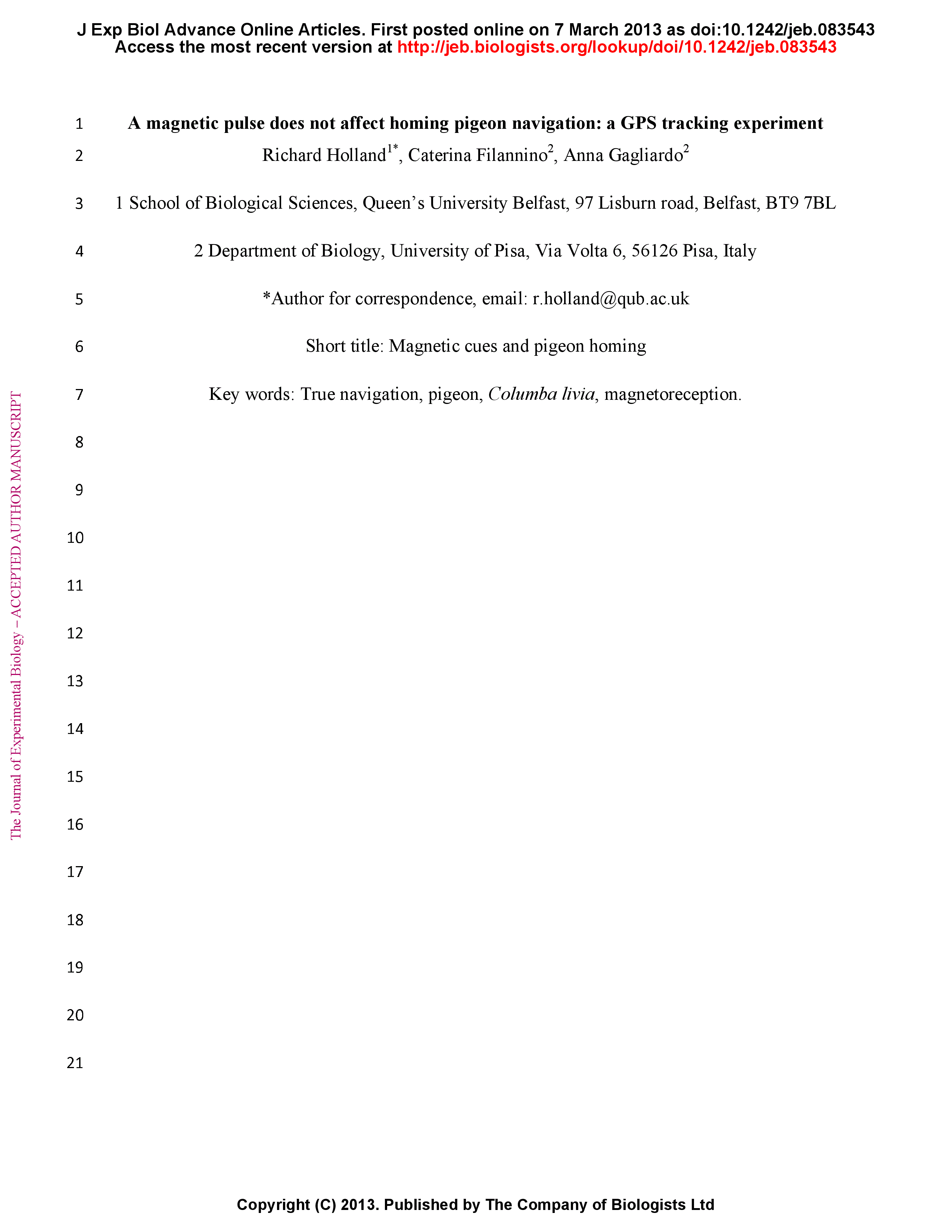Summary
The cues by which homing pigeons are able to return to a home loft after displacement to unfamiliar release sites remain debated. A number of experiments in which migratory birds have been treated with a magnetic pulse have produced a disruption in their orientation, which argues that a ferrimagnetic sense is used for navigation in birds. One previous experiment has also indicated an effect of magnetic pulses on homing pigeon navigation, although with inconsistent results. Previous studies have shown that some magnetic-related information is transmitted by the trigeminal nerve to the brain in some bird species including the homing pigeon. The function of this information is still unclear. It has been suggested that this information is important for navigation. Previous studies with trigeminal nerve lesioned pigeons have clearly shown that the lack of trigeminally mediated information, even if magnetic, is not crucial for homing performance in homing pigeons. However, this result does not completely exclude the possibility that other ferrimagnetic receptors in the homing pigeon play role in navigation. Additionally, recent studies on homing pigeons suggested the existence of a ferrimagnetic sense in a novel location presumably located in the inner ear (lagena). In the current study, we tested whether any ferrimagnetic magnetoreceptors, irrespective of their location in the bird's head, are involved in pigeons' homing. To do this, we treated homing pigeons with a strong magnetic pulse before release, tracked birds with GPS-loggers and analyzed whether this treatment affected homing performance. In the single previous magnetic pulse experiment on homing pigeons only initial orientation at a release site was considered and the results were inconsistent.We observed no effect of the magnetic pulse at any of the sites used, either in initial orientation, homing performance, tortuosity or track efficiency, which does not support a role for the ferrimagnetic sense in homing pigeon navigation, at least not in this geographic area, where magnetic field variations are in the region of 200 nT intensity and 0.8° inclination.








